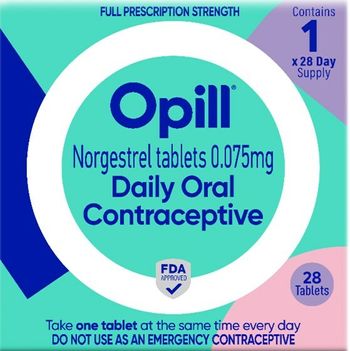
Myth and management in American hospitals: The bottom line on length of stay
Controversy and class action suits charging wrongful use of guidelines to deny or restrict hospital care have savvy purchasers wondering whether LOS is a valid measure of anything.
Myth and management in American hospitals
The bottom line on length of stay
Controversy and class action suits charging wrongful use of guidelines to deny or restrict hospital care have savvy purchasers wondering whether LOS is a valid measure of anything.
By Helen Lippman, Contributing Editor
"Everybody's out there trying to find a financial way to solve clinical problems," asserts Becky Cherney, president of the Central Florida Health Care Coalition, "but we realized early in managed care that discounts were not going to cure our patients."
Representing the Orlando area's largest employers and more than a million covered lives, the coalition has the clout to push its agenda. "We required hospitals in the area to purchase a data measurement system that allows you to monitor procedures," Cherney says. "Length of stay is one piece of the puzzle, but it's far more important to look at outcomes, identify the one or two best ways to do something and eliminate variation." Top-quality care, she asserts, costs less and generally results in shorter lengths of stay as well.
Cherney has stories and statistics to back up her claim. Restricting hospital formularies to the anticoagulants associated with the best outcomes for open-heart surgery patients, for instance, reduced complication rates (and expenses and duration). Another study at a central Florida hospital showed that many patients undergoing endarterectomya procedure Cherney describes as a carotid artery Roto-Rooterwere getting pre-op angiograms and post-op intensive care that they didn't need. Under revised protocols, the portion of patients admitted to the ICU plummeted from 77 percent to 9 percent, angiogram rates dropped from 32 percent to 4 percent, costs per patient went from $7,800 to $5,400, and the average LOS slid from nearly three days to under two.
Despite such evidence, many benefits managers ask how much they're paying rather than what they're buying. That encourages health plans and hospitals to minimize inpatient care in order to remain price competitive. Convincing them that lower cost naturally follows higher qualityand that those who fixate on cutting LOS have their lenses in backwardsis a particularly hard sell. The guideline-LOS-cost-quality conundrum is complex, but concentrating on some specific aspects can tell you a lot about any hospital or health plan.
Enter M&R
Milliman & Robertson, the Seattle-based actuarial firm that dominates the field, began developing guidelines in the early '80s. The impetus came from a physician whose earlier efforts were an attempt to cope with Medicare's hospital payment system.
As managed care spread, M&R guidelines, particularly those on inpatient care and length of stay, became the most widely used and best known. Some were, to say the least, controversial, especially the 24-hour stay for childbirth and the outpatient mastectomy. Both set off national furors and prompted legislation. Other controversies are playing out in court, including a 1997 class action suit against Prudential that mentions M&R guidelines by name and a 1999 suit in which two Texas physicians charge that the firm used their names in a manner that falsely implied that they endorsed its pediatric guidelines and had authored many of them.
James Schibanoff, a former hospital CEO and the current editor in chief of the guidelines, was "amazed" at the brouhaha over the same-day mastectomy. It occurred in 1997 when he had just joined M&R and left a clinical environment in southern California where outpatient mastectomy was the norm. Ironically, "the practice started more at patient request than at insurance company fiat, and there were already articles in the literature about its safety," he recalls. "What's more, we had found a program at Johns Hopkins that I thought was a national model of what ambulatory mastectomy should be."
M&R simply reported what was happening in the real world, says Schibanoff: "That's how we see our roleas reporters as opposed to being the subject of all the controversy."
In a recent interview with Business & Health, Schibanoff reiterated the firm's long-standing insistence that its guidelines are not always used as intended. Each LOS cited, Schibanoff points out, is labeled a goal to be achieved by following a series of recommended interventions. A patient hospitalized for an acute heart attack might be ready to go home after three days, for instance, but only if he's begun taking oral beta-blockers, undergone cardiac rehab and met with a dietitian. What's more, the length-of-stay goal is intended for uncomplicated cases where everything goes well.
M&R sponsors seminars for users and prefaces each volume by stating that the guidelines "should not be used as the sole basis for denying authorization for treatment . . . or as the sole basis for denying payment for treatment received." Asked whether the firm has a responsibility to intervene if it becomes aware of an insurer's misuse, Schibanoff retorts, "What other industry does that?"
In recent years, he says most M&R guidelines have been converted from a consensus-based to an evidence-based methodology with a three-tiered hierarchy. "The top level of evidence, the gold standard, is the randomized control trial. The second level is an observational trial or research, published in a peer-reviewed journal." The lowest tier is unpublished evidencea large database analysis, for instance, or quality improvement projects by individual health care organizations.
Meet the competition
InterQual, M&R's major competitor, uses consensus. Its guidelines, which the organization calls clinical decision support or clinical appropriateness criteria, are developed by a panel of physicians, says Marian Mustovy, a marketing communications officer. Whether writing or upgrading, the doctors review the latest medical literature and draw from their own experiences and expertise.
Clients of InterQual, now part of San Francisco-based McKesson, include some 2,000 hospitals, hundreds of health plans, the Department of Defense and the Health Care Financing Administration, which uses the firm's clinical criteria for retrospective medical necessity and payment review.
Another user is PacifiCare, a California-based health plan with more than four million members in eight states. "The criteria are based on severity and intensity of services, basically to guide clinicians in making decisions about medical appropriateness," says Ferial Bahremand, vice president of corporate medical and network management. "Most of the hospitals and physician groups we deal with use InterQual, too."
While the InterQual guides discuss treatments and procedures for specific diagnoses, she adds, "they would not tell you that for this illness you need, say, a three-day stay. We've piggybacked the InterQual clinical criteria and length-of-stay data from HCIA/Sachs," an organization recently renamed Solucient, that's the other key player.
For its part, Solucient "does not sell protocols or provide guidelines," emphasizes Jean Chenoweth, executive director of the firm's research institute. "We track patterns and publish actual LOS data from various databases" drawn from some 2,000 U.S. hospitals and broken out by region.
Many plans and providers use this information as a benchmark, Chenoweth adds. That's the case at PacifiCare, says Bahremand: "We believe that if we focus on providing quality caredelivered at the right time, in the right place, by the right peoplethen we don't need to focus on how many days a patient is hospitalized." Nevertheless, PacifiCare has been charged with wrongful use of guidelines to make financial and medical necessity decisions in a class action suit representing enrollees.
Health plans under fire
The list of large health plans facing suits filed by members or physicians just keeps growing. (Several were contacted but did not respond to requests to be interviewed for this article.) The lawsuits do not, however, name any guidelines purveyors as defendants.
That's because medical directors and other plan executives decide whether to buy a set of guidelines and precisely how to use them. There's plenty of room for variation, attests Pat Wang, senior vice president for finance and managed care at the Greater New York Hospital Association, a trade organization representing 100 hospitals.
"Just about everyone is using M&R guidelines," she claims, "but the way they're applied is influenced by the culture and philosophy of the plan. Some have a reputation of being unbelievably rigid, while others reach out to attending physicians if they're unsure about medical necessity. You get very different results that way, even when you have two patients on the same floor with identical diagnoses but different insurance coverage."
Rigid adherence to the LOS endpoint of guidelines has posed reimbursement problems for virtually all the association's hospitals, according to Wang.
"They'll say, for example, 'We acknowledge that the patient needed to be in the hospital, but we don't think that one of those days was a full acute care day, so we'll pay you half.'"
The American Medical Association has publicly denounced plans' misuse of guidelines. "Words have meanings," emphasizes Donald Palmisano, a New Orleans surgeon and AMA trustee, and guidelines are meant to be used as a starting point. "The AMA objects to using any guideline as final arbiter," he says, "or as a mandate that usurps clinical judgment."
In testimony before Congress, Palmisano described his own experience with a health plan intent on doing just that. A patient had come in shortly after having a ministroke, and immediately had another, he recalls. Both times the man temporarily lost sight in his right eye and feeling in his left hand. Palmisano diagnosed transient ischemic attack caused by blockage in the right carotid artery, a life-threatening condition. Yet the patient's insurer refused to authorize hospitalization. The reason? "He can be worked up as an out-patient, according to the guidelines we have." Palmisano finally worked his way up the phone chain to a physician, who understood that the patient was in imminent danger of having a major stroke that could leave him paralyzed or dead.
While plans are the major legal target, guidelines themselves don't escape unscathed. The AMA, for instance, submitted an amicus brief on behalf of the plaintiffs in the Prudential case, arguing that Milliman & Robertson's guidelines "reflect neither the appropriate standard of care nor prevailing medical opinion." A recent class action against CIGNA also mentions M&R by name. And, says D. Brian Hufford, an attorney for the plaintiffs in both cases, "our concerns about M&R are also part of pending actions against Aetna and Kaiser."
How firm a foundation?
An oft-repeated criticism is that the most common LOS guidelines are actuarial rather than clinical. Last fall, for instance, Solucient released a study comparing M&R's pediatric length- of-stay goals with actual durations drawn from a database of 3.5 million pediatric discharges and with the experience of its list of 100 Top Hospitals, selected for both clinical and financial efficiency.
The study found significant differences between the M&R guidelines and the actual practices of even the top hospitals. "At the 100 Top," notes Jean Chenoweth, "the average LOS was 8.3 days for bacterial meningitis. M&R guidelines specify three." That, Solucient contends, raises questions about children's safety and whether the guidelines are truly evidence-based. "Where are the institutions whose practices they reflect?" Chenoweth demands.
In fact, the figures cited are not precisely comparable. The longer stays included both complicated and uncomplicated cases, while M&R says its guidelines apply only to the latter. Nonetheless, the researchers found separately that two thirds of the uncomplicated hospitalizations exceeded M&R goals.
Schibanoff counters that the study simply misses the point: "The guidelines cite goal lengths of stay, but people seem to have unusual difficulty grasping that concept. It's like getting an A in a course." Comparing average and goal LOS, he says, is a classic case of apples and oranges. "When we looked at the percentage of pediatric patients who achieved the goal LOS in California and Washington," he adds, "it came to about 45 percent."
In a letter to The Wall Street Journal in response to its coverage of the Solucient study, Schibanoff wrote: "The most important message . . . is that American health care remains very inefficient." He also pointed out that the report was based on an analysis of large databases, which is "among the least reliable forms of evidence."
About one M&R guideline in 10 is based primarily on this lowest rung in the evidence hierarchy, and those are always backed up with supporting evidence, Schibanoff says. M&R's goal length of stay for a total hip replacement (three days) is not reflected in the medical literature, for instance, but there are published reports on the efficacy of a four-day stay. "We also know of a number of hospitals and health systems that have safely implemented the shorter stay in various parts of the country."
The elusive better way
No one suggests that all guidelines be eliminated or length-of-stay data no longer be tracked, but rather that LOS be seen as just one piece of a large pie.
As length of stay continues to decline, it becomes less useful as an evaluation measure, notes John Griffith, a University of Michigan School of Public Health professor who participated in a study attesting to the validity of the methodologyincluding LOSused by Solucient to determine its 100 Top list.
"Utilization is a poor indicator for quality of care," adds Catherine Kunkle, vice president of the National Business Coalition on Health. In evaluating health plans, she adds, the organization's 90 member coalitions tend to look more at compliance with best practice guidelines like those issued by the federal Agency for Healthcare Research and Quality than at LOS. Still, she admits, "Employers pay the bills so they want length of stay to be low." In other words, many are still stuck in a quandary over price vs. value.
Length of stay can easily fade into the background once health plans and hospitals have it under control. That's the case in the Denver area, says Cathy Van Doren, a nurse and director of clinical programs for The Alliance, a Denver-based business health coalition. "Our mission is not to nitpick about LOS, precertification, even medical necessity," she says of the utilization management program that's used by about 10 percent of Alliance's self-insured members.
"We use national discharge statistics as a length-of- stay guide," Van Doren acknowledges, "but we're much more interested in helping patients get the best care. We really don't get excited if they stay an extra day." Often, that policy pays off, she concludes, recalling a woman who had a knee replacement. "Her husband had a cardiac event just two weeks earlier, and keeping her until they could better care for each other was probably money well spent."
The Central Florida Health Care Coalition may have the best model for employers: Require plans and hospitals to track outcomes and follow the one or two best practices for each condition, drawn not from some national guideline but from their own data. Make no mistake, Becky Cherney says, "There are not 10 best ways to do something." Eliminating variation is the way to go, provided you continually look for ways to do it even better. Do it right, she concludes, and reduced costs and LOS will follow.
Updating the LOS bible
With Milliman & Robertson about to release the latest update of its guidelines, Editor in Chief James Schibanoff supplied draft copies of several and discussed the two substantive changes with B&H.
The first is the addition of indicators for hospitalization. With the exception of diagnoses that always require inpatient careacute myocardial infarction, for example"we now list reasons to be admitted," he says. "We've had lots of requests for this from ER physicians, hospitalists and other health care decision makers." Still, he cautions, the guideline doesn't make the decision. That's up to the doctors.
The second, and perhaps more significant, revision puts the goal length of stay in context. "We've added an "Extended Stay" section. It cites the main reasons why people can't meet the goal," says Schibanoff, "and gives estimates of how long an additional stay to expect." Rather than specifying another set of numbers, though, extended stays are defined as brief (one-three days), moderate (four-seven days) or prolonged (over a week).
This addition responds to questions from practitioners and queries from the media, says Schibanoff, who hopes that it will clear up some long-standing misinterpretations of the concept of goal length of stay. "Now we have the goal that we all aspire to," he notes, "and the main reasons we can't always achieve it."
Helen Lippman. Myth and management in American hospitals: The bottom line on length of stay. Business and Health 2001;4:35.
Newsletter
Get the latest industry news, event updates, and more from Managed healthcare Executive.






















































